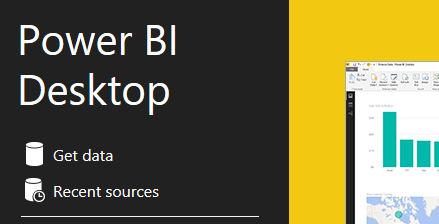Difference between revisions of "Power BI with Power Query"
(→Setting up our first API query directly in Power BI Desktop) |
|||
| Line 26: | Line 26: | ||
To access the Advanced editor click on the View Tab and select 'Advanced Editor'. This will open a new window. For the purpose of this example you can copy the text below but you will need to change the file path on the second line (keyFile) to the location of your [[API_Authentication#Using_Excel_to_store_credentials_for_Power_Query| Authentication File]]. In the advanced editor delete the details currently display and paste the example below, making sure you have updated the keyFile line. | To access the Advanced editor click on the View Tab and select 'Advanced Editor'. This will open a new window. For the purpose of this example you can copy the text below but you will need to change the file path on the second line (keyFile) to the location of your [[API_Authentication#Using_Excel_to_store_credentials_for_Power_Query| Authentication File]]. In the advanced editor delete the details currently display and paste the example below, making sure you have updated the keyFile line. | ||
| − | + | ||
| − | |||
let | let | ||
| − | keyFile = "C:\Users\ | + | keyFile = "C:\Users\RichardDuheaume\Desktop\Dizions_API_Details.xlsx", |
SourceKey = Excel.Workbook(File.Contents(keyFile), null, true){0}[Data]{0}[Column2], | SourceKey = Excel.Workbook(File.Contents(keyFile), null, true){0}[Data]{0}[Column2], | ||
OrgKey = Excel.Workbook(File.Contents(keyFile), null, true){0}[Data]{1}[Column2], | OrgKey = Excel.Workbook(File.Contents(keyFile), null, true){0}[Data]{1}[Column2], | ||
UserKey = Excel.Workbook(File.Contents(keyFile), null, true){0}[Data]{2}[Column2], | UserKey = Excel.Workbook(File.Contents(keyFile), null, true){0}[Data]{2}[Column2], | ||
APIHost = Excel.Workbook(File.Contents(keyFile), null, true){0}[Data]{3}[Column2], | APIHost = Excel.Workbook(File.Contents(keyFile), null, true){0}[Data]{3}[Column2], | ||
| − | |||
| − | |||
| − | |||
URL = APIHost | URL = APIHost | ||
| − | & " | + | & "/v2/referrals/date_active/2010-10-01,2020-10-31/field/id;date;client;referrer;contact_method;client_age_range;project_name" |
| − | |||
| − | |||
| − | |||
| − | |||
| − | |||
| − | |||
| − | |||
| − | |||
| − | |||
| − | |||
| − | |||
| − | |||
| − | |||
| − | |||
| − | |||
| − | |||
| − | |||
| − | |||
| − | |||
| − | |||
| − | |||
| − | |||
| − | |||
| − | |||
| − | |||
| − | |||
| − | |||
| − | |||
| − | |||
| − | |||
| − | |||
| − | |||
| − | |||
| − | |||
| − | |||
| − | |||
| − | |||
| − | |||
| − | |||
& "?resolveIds[]=ALL", | & "?resolveIds[]=ALL", | ||
apiResults = Json.Document(Web.Contents(URL, [Headers=[#"Source"=SourceKey, #"Org"=OrgKey, #"User"=UserKey]])), | apiResults = Json.Document(Web.Contents(URL, [Headers=[#"Source"=SourceKey, #"Org"=OrgKey, #"User"=UserKey]])), | ||
| Line 85: | Line 42: | ||
in | in | ||
#"Changed Type" | #"Changed Type" | ||
| − | |||
| − | |||
| − | |||
| − | |||
| − | |||
| − | |||
| − | |||
| − | |||
| − | |||
Revision as of 11:40, 5 August 2020
This section requires Power BI skills and a knowledge of how the API works. It my be useful to use an API Development tool to check the dictionaries and make test calls, Postman is a suitable tool for this. Power Query is used to call the API to retrieve the data.
What you will need
In order to follow this section you will need the following;
- Dizions API Licence (Read Only or Full)
- Microsoft Power BI Professional licence
- Power BI Desktop installed
- API Development tool (Optional)
Setting up our first API query directly in Power BI Desktop
Here we are going to look at how to get started using the API and Power Query in Power BI. Before you start you will need to create an Authentication File, with this file we can then use a standard header for all of our queries that we wish to use.
Open Microsoft Power BI Desktop and select get data.
Power BI Desktop will then open and display the Get Data Menu. By default the All source menu will be selected. Scroll to the bottom of this list and select blank query and click Connect.
This will open the Power Query Editor and create Query 1. We are going to use the advanced editor to paste the following:
- Details of the authentication, stored in our Authentication File.
- A call to the API dictionary to see which records we have on the system.
To access the Advanced editor click on the View Tab and select 'Advanced Editor'. This will open a new window. For the purpose of this example you can copy the text below but you will need to change the file path on the second line (keyFile) to the location of your Authentication File. In the advanced editor delete the details currently display and paste the example below, making sure you have updated the keyFile line.
let
keyFile = "C:\Users\RichardDuheaume\Desktop\Dizions_API_Details.xlsx",
SourceKey = Excel.Workbook(File.Contents(keyFile), null, true){0}[Data]{0}[Column2],
OrgKey = Excel.Workbook(File.Contents(keyFile), null, true){0}[Data]{1}[Column2],
UserKey = Excel.Workbook(File.Contents(keyFile), null, true){0}[Data]{2}[Column2],
APIHost = Excel.Workbook(File.Contents(keyFile), null, true){0}[Data]{3}[Column2],
URL = APIHost
& "/v2/referrals/date_active/2010-10-01,2020-10-31/field/id;date;client;referrer;contact_method;client_age_range;project_name"
& "?resolveIds[]=ALL",
apiResults = Json.Document(Web.Contents(URL, [Headers=[#"Source"=SourceKey, #"Org"=OrgKey, #"User"=UserKey]])),
#"Converted to Table" = Table.FromList(apiResults, Splitter.SplitByNothing(), null, null, ExtraValues.Error),
#"Expanded Column1" = Table.ExpandRecordColumn(#"Converted to Table", "Column1", {"id", "date", "client", "project_name", "contact_method", "referrer", "client_age_range"}, {"Column1.id", "Column1.date", "Column1.client", "Column1.project", "Column1.contact_method", "Column1.referrer", "Column1.client_age_range"}),
#"Changed Type" = Table.TransformColumnTypes(#"Expanded Column1",Template:"Column1.date", type datetime)
in
#"Changed Type"

